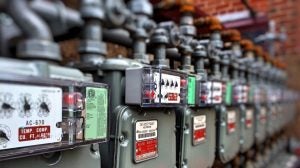 BLOG UPDATE – FEBRUARY 16, 2018
BLOG UPDATE – FEBRUARY 16, 2018
Environmental Defense Fund and other environmental groups submitted comments [PDF] to the Public Utilities Commission of Ohio on the federal tax reform, and why the Commission should reconsider utilities’ requests to increase rates to help prop up their old coal and nuclear plants. The groups suggest the utilities should pass the savings back to customers and, in addition, consider using some of the funds to modernize the electric grid and benefit customers.
For the past few years, Ohio’s electric utilities have asked state lawmakers and the Public Utilities Commission of Ohio (PUCO) to bail out their old coal and nuclear plants. The storyline is, the power plants are losing money in the competitive wholesale market, so the utilities want customers to subsidize the losses and allow the plants to stay open.
To keep old plants running is throwing good money after bad. And the new federal tax law will give utilities a huge bonanza anyway, so the requested subsidies are even more unnecessary.
Tax breaks and bailouts
The new federal tax law is a jackpot for electric utilities. Congress passed the Tax Cuts and Jobs Act in late December, reducing the corporate income tax rate from 35 percent to 21 percent. For the regulated businesses, the tax cut should benefit customers via lower electricity bills. But for the utilities’ unregulated businesses, the tax cut will benefit the utilities’ shareholders. Read More »
 Thanks to Midwest utilities, regulators and a pair of unprofitable power plants, electricity customers in Ohio, Kentucky and Indiana will get a lump of coal this holiday season. The owners keep running these plants at a big loss – projected at over $5 billion – resulting in higher electricity prices and polluting power that isn’t needed.
Thanks to Midwest utilities, regulators and a pair of unprofitable power plants, electricity customers in Ohio, Kentucky and Indiana will get a lump of coal this holiday season. The owners keep running these plants at a big loss – projected at over $5 billion – resulting in higher electricity prices and polluting power that isn’t needed.













